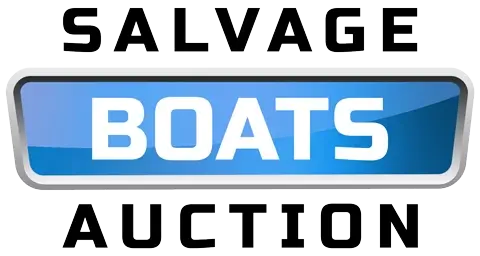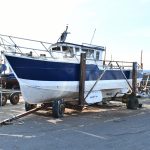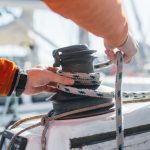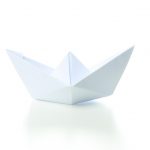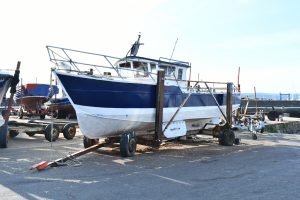Importance of earning and learning from debris-harvested repairs
Earning and learning from debris-harvested repairs is of utmost importance in today’s world. The process of salvaging materials from shipwrecks not only helps in cleaning up the ocean but also provides valuable resources for repairs. By utilizing these debris-harvested materials, individuals can not only save costs but also gain valuable skills and knowledge in repairing and repurposing. This approach not only promotes sustainability but also encourages a circular economy where waste is minimized and resources are maximized. So, if you are looking to make a difference while earning and learning, embracing debris-harvested repairs is the way to go.
Benefits of implementing debris-harvested repairs
Implementing debris-harvested repairs offers a multitude of benefits that can revolutionize the way we approach shipwrecked vessels. By utilizing the debris found from these shipwrecks, we not only contribute to the preservation of marine ecosystems but also create a sustainable solution for repair and maintenance. The process involves salvaging materials such as wood, metal, and other components, which can be repurposed to fix damaged parts of the vessel. This innovative approach not only reduces the reliance on traditional repair methods but also minimizes the environmental impact associated with manufacturing new materials. Additionally, implementing debris-harvested repairs provides an opportunity for hands-on learning and skill development, as individuals can gain practical experience in ship repair while contributing to a larger cause. By embracing this approach, we not only save costs but also foster a sense of environmental responsibility and promote a circular economy.
Understanding Shipwrecked Debris-Harvested Repairs
Definition and concept of debris-harvested repairs
Debris-harvested repairs is a revolutionary concept in the field of shipwreck recovery and restoration. It involves salvaging and repurposing the wreckage of sunken ships to not only repair damaged vessels, but also to create new and innovative structures. By harnessing the power of debris, this process not only reduces waste and environmental impact, but also provides a unique opportunity to learn from the past and create a sustainable future. Through careful examination and analysis of the debris, valuable insights can be gained into the construction methods and materials used in the past, allowing for advancements in shipbuilding techniques. This pioneering approach to repairs not only saves costs, but also offers a chance to preserve history and promote a greener maritime industry.
Types of debris that can be harvested for repairs
Shipwrecks can provide a wealth of resources for those looking to earn and learn through debris-harvested repairs. By salvaging various types of debris, individuals can not only contribute to the preservation of marine ecosystems but also acquire valuable skills in repair and restoration. There are several types of debris that can be harvested for repairs, including wood, metal, and fabric. These materials can be repurposed and transformed into functional and aesthetically pleasing items, such as furniture, artwork, and even clothing. By engaging in this process, individuals can not only earn a sustainable income but also gain a deeper understanding of the importance of recycling and upcycling in today’s world.
Methods of collecting and utilizing debris for repairs
Shipwrecked: Earn and Learn from Debris-Harvested Repairs is an insightful article that explores the methods of collecting and utilizing debris for repairs. This article delves into the innovative ways in which individuals can not only salvage materials from shipwrecks but also earn and learn from these debris-harvested repairs. By harnessing the power of creativity and resourcefulness, individuals can transform discarded materials into valuable resources. From repurposing wood planks to reusing metal scraps, this article showcases the endless possibilities of turning debris into functional and beautiful objects. Whether you are a DIY enthusiast or someone looking to contribute to sustainable practices, this article provides valuable insights and inspiration for utilizing debris for repairs. Bold keywords: Shipwrecked, Earn and Learn, Debris-Harvested Repairs, collecting, utilizing, innovative ways, salvage materials, earn, learn, debris-harvested repairs, creativity, resourcefulness, transform, discarded materials, valuable resources, repurposing, reusing, metal scraps, endless possibilities, functional, beautiful objects, DIY enthusiast, sustainable practices, valuable insights, inspiration.
Earning from Debris-Harvested Repairs
Exploring the economic potential of debris-harvested repairs
Exploring the economic potential of debris-harvested repairs is an exciting endeavor. One of the key ways to maximize the value of these repairs is through the use of online auctions. Online auctions provide a platform for buyers and sellers to connect and trade debris-harvested repairs. This allows for a wider reach and greater accessibility, opening up opportunities for individuals and businesses to earn and learn from these valuable resources. By participating in online auctions, individuals can not only monetize their debris-harvested repairs but also gain valuable insights and knowledge from other participants in the auction. It’s a win-win situation where everyone benefits and contributes to the economic growth of this emerging market.
Opportunities for entrepreneurship in the debris-harvested repairs industry
The debris-harvested repairs industry offers numerous opportunities for entrepreneurship. With the increasing number of shipwrecks and the need for repairs, there is a growing demand for skilled professionals in this field. Entrepreneurs can take advantage of this demand by offering specialized repair services, such as salvaging and restoring damaged parts of ships. By utilizing debris that would otherwise go to waste, entrepreneurs can contribute to sustainable practices while also earning a profit. Additionally, the debris-harvested repairs industry provides opportunities for innovative solutions and technologies, such as using 3D printing to create replacement parts. By staying up-to-date with the latest advancements in the field, entrepreneurs can position themselves as leaders in this industry and attract customers who value quality and efficiency.
Case studies of successful businesses in debris-harvested repairs
Shipwrecked: Earn and Learn from Debris-Harvested Repairs is an article that explores the fascinating world of businesses that thrive on salvaging and repairing debris. In this section, we will delve into case studies of successful businesses in debris-harvested repairs. These businesses have mastered the art of salvaging autos near me and turning them into valuable assets. By utilizing innovative techniques and expertise, they have created a niche market for themselves. Let’s take a closer look at some of these inspiring success stories.
Learning from Debris-Harvested Repairs
Acquiring valuable skills through debris-harvested repairs
Acquiring valuable skills through debris-harvested repairs is a unique and innovative way to gain practical knowledge and expertise. By salvaging materials from shipwrecks and using them to repair and build new structures, individuals can learn valuable skills in carpentry, engineering, and problem-solving. This hands-on approach not only provides a sustainable solution for debris removal but also offers an opportunity for personal growth and development. With a focus on environmental conservation and skill acquisition, this method of learning combines practicality with sustainability, making it an ideal choice for those looking to earn and learn from debris-harvested repairs.
Educational programs and certifications for debris-harvested repairs
Educational programs and certifications for debris-harvested repairs provide valuable opportunities for individuals to gain the necessary skills and knowledge in this specialized field. These programs offer comprehensive training on the techniques and best practices for repairing and repurposing debris. Participants learn how to identify salvageable materials, assess their condition, and apply appropriate repair methods. By obtaining certifications in debris-harvested repairs, individuals demonstrate their expertise and commitment to sustainable practices. These certifications also enhance their credibility and marketability in the industry, opening doors to various career opportunities. Joining these educational programs and obtaining certifications is a significant step towards becoming a skilled professional in debris-harvested repairs.
Collaborative learning and knowledge sharing in the debris-harvested repairs community
Collaborative learning and knowledge sharing in the debris-harvested repairs community play a crucial role in fostering innovation and sustainability. By bringing together individuals with diverse expertise and experiences, this community creates a dynamic environment for exchanging ideas and problem-solving. Through active collaboration, members can leverage their collective knowledge to develop innovative solutions for repairing shipwrecks and salvaging valuable materials. The collaborative nature of this community not only accelerates the learning process but also promotes the adoption of best practices and the continuous improvement of repair techniques. By embracing a culture of knowledge sharing, the debris-harvested repairs community not only enhances individual learning but also contributes to the overall growth and advancement of the field.
Challenges and Solutions in Debris-Harvested Repairs
Environmental concerns and sustainability in debris-harvested repairs
Debris-harvested repairs offer a unique opportunity to address environmental concerns and promote sustainability. By salvaging materials from shipwrecks, we can not only reduce waste but also learn from the debris we collect. This process allows us to earn valuable insights into the effects of marine pollution and the potential for innovative solutions. Through careful examination and analysis, we can identify the causes of shipwrecks and develop strategies to prevent them in the future. By highlighting the importance of debris-harvested repairs, we can inspire others to join us in our mission to protect the environment and create a more sustainable future.
Quality control and safety measures in debris-harvested repairs
Quality control and safety measures play a crucial role in debris-harvested repairs. These measures ensure that the repairs are carried out efficiently and effectively, while also prioritizing the safety of the workers and the quality of the final product. By implementing stringent quality control protocols, such as thorough inspections and testing procedures, any potential issues or defects can be identified and addressed early on. Additionally, safety measures, such as providing appropriate protective gear and training, help minimize the risk of accidents and injuries during the repair process. With a focus on quality control and safety, debris-harvested repairs can be conducted with confidence, providing both economic and environmental benefits.
Addressing legal and regulatory issues in debris-harvested repairs
Addressing legal and regulatory issues in debris-harvested repairs is crucial to ensure the sustainability and legality of this innovative approach. As the demand for eco-friendly and cost-effective solutions grows, it is imperative for businesses and individuals to navigate the complex landscape of laws and regulations governing debris-harvested repairs. By proactively addressing legal and regulatory issues, stakeholders can not only mitigate potential risks but also capitalize on the numerous benefits offered by this sustainable practice. With a focus on compliance, transparency, and environmental responsibility, debris-harvested repairs can revolutionize the way we approach repair and maintenance, creating a win-win situation for both the environment and the economy.
Conclusion
Summary of the benefits and opportunities in debris-harvested repairs
Debris-harvested repairs present a multitude of benefits and opportunities for individuals looking to earn and learn. By salvaging materials from shipwrecks, one can acquire valuable resources at a fraction of the cost. This not only reduces expenses but also promotes sustainability by repurposing items that would otherwise go to waste. Moreover, engaging in debris-harvested repairs allows individuals to develop practical skills and knowledge in repairing and restoring various objects. Whether it’s fixing furniture, electronics, or even vehicles, this practice offers a hands-on learning experience that can be invaluable. With the rise of online platforms, such as websites and marketplaces, it has become easier than ever to buy motorcycles online. By taking advantage of these platforms, individuals can access a wide range of options and make informed purchasing decisions. From vintage classics to modern models, the online market provides convenience and accessibility for motorcycle enthusiasts. Additionally, online platforms often offer competitive prices and the ability to connect with sellers directly. This fosters a sense of community and enables individuals to find the perfect motorcycle that suits their needs and preferences. Overall, debris-harvested repairs and the ability to buy motorcycles online offer unique opportunities for individuals to both learn and benefit from their interests and passions.
Call to action for individuals and businesses to embrace debris-harvested repairs
With the increasing number of shipwrecks and the environmental impact they have, it is crucial for individuals and businesses to embrace debris-harvested repairs. By utilizing materials salvaged from shipwrecks, we can not only reduce waste but also contribute to the preservation of our oceans. Embracing debris-harvested repairs not only benefits the environment but also presents a unique opportunity for individuals and businesses to earn and learn. By participating in this sustainable practice, we can create a positive impact while also gaining valuable knowledge and skills in repairing and repurposing materials. Join us today in making a difference and embracing debris-harvested repairs!
Future prospects and advancements in the debris-harvested repairs industry
The future prospects and advancements in the debris-harvested repairs industry are promising. With the increasing awareness of environmental sustainability and the need for cost-effective solutions, debris-harvested repairs have gained significant attention. This industry offers a unique opportunity to earn and learn from the process of repairing shipwrecks and salvaging debris. By utilizing advanced technologies and innovative techniques, professionals in this field can contribute to the preservation of marine ecosystems and the reduction of waste. The potential for growth in this industry is immense, as more companies and individuals recognize the value of debris-harvested repairs. By investing in research and development, exploring new markets, and collaborating with experts in related fields, the debris-harvested repairs industry can continue to thrive and make a positive impact on both the environment and the economy.
